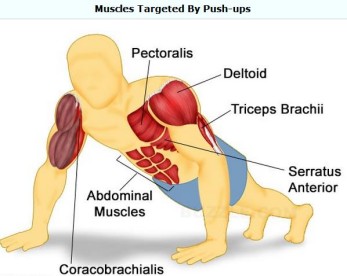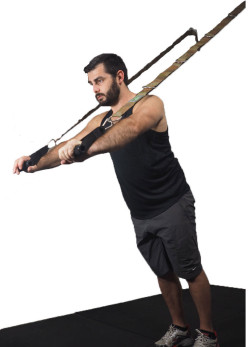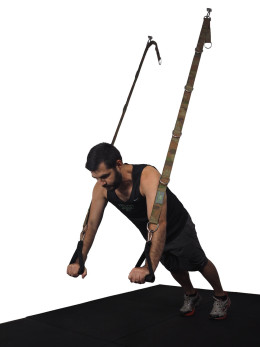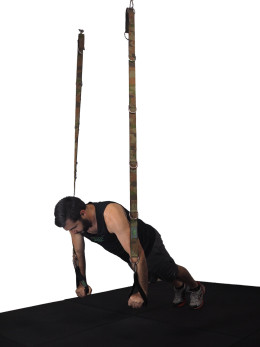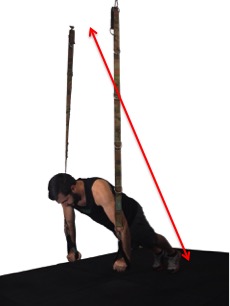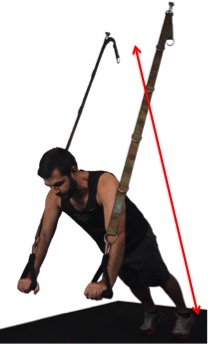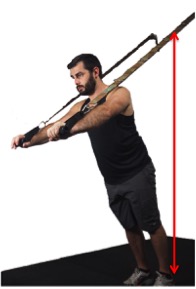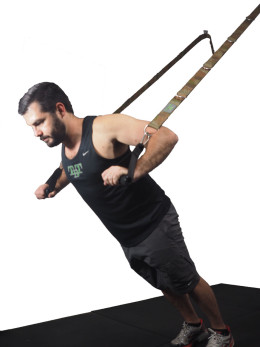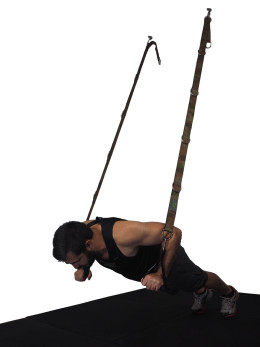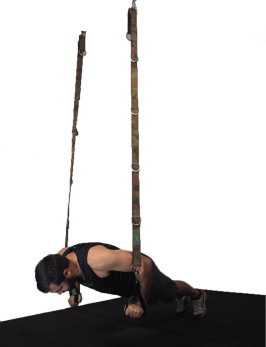A Guide To Suspension Push Ups
Suspended Push Ups take the humble yet highly effective Push Up to a whole new level.
The basic Push Up is a fast and effective way of building functional upper body strength by activating a vast array of muscle groups, including, the arms, chest, shoulders, spinal stabilisers, abdominals and other core stabilisers. For a little more depth on muscles that Push Ups Activate, see http://www.md-health.com/What-Muscles-Do-Push-Ups-Work.html. That’s the upper body covered, what about the lower body.
The Push Up will also activate the glutes, the quad’s and hamstrings, calves and all the stabilisers associated with these muscles. NO the Push Up won’t give you amazing quads, but any activation is better then no activation, and to perform a perfect Push Up, you need to be activating every muscle you possibly can. If you’re looking for more information on the Push Up, have a read of The Best Damn Push-Ups Article, Period!
How Suspension Trainers Change The Humble Push-Up
Adding a Suspension Trainer to your training can take a simple exercise, such as the Push Up, to quite an advanced exercise. So does this mean only advanced trainers can use Suspension Trainers?
The answer is NO. Suspension Trainers can be used by absolute beginners training in the comfort of their own home whilst building the confidence to train in public, right up to elite athletes that a world leaders in their specific fields. The beauty of the suspended push up is by simply making slight adjustments to technique and position the exercise everyone is able to achieve effective results.
What are the Differences Between Push-Ups and Suspended Push-Ups?
Suspension Trainers increase the level of activation of muscles by making them work harder. But not only harder, Suspension Trainers challenge the stabiliser muscles that wouldn’t ordinarily be activated during a supported version of the same exercise
A great example of this is the comparison of Push-Ups on the floor, when compared to Suspension Push Ups. There are limited scientific articles that prove that the use of Suspension Trainers increase muscle activation and output specifically in the study of Suspension Push Ups. See the results of a study in the Journal of Human Kinetics, (Electromyographic Comparison of Traditional and Suspension Push Ups) http://www.ncbi.nlm.nih.gov/pmc/articles/PMC3916913/) which does a comparison between Traditional and Suspension Push Ups, as well as evidence to support the effectiveness of the Suspension Push Up vs the Traditional Push Up.
Setting Up To Complete Suspension Push-Ups
Foot Position
Suspension Training and foot position go hand in hand when performing suspension exercises. When talking foot position, we are talking in relation to anchor point. If you remember back to our first blog, your anchor point is any solid structure you have attached your Suspension Training System to. If your feet are directly below the anchor point, you will be lifting minimal body weight and the exercise will be quite easy. The further you move your feet away from your anchor point, the more resistance you will experience and the harder the exercise as you are lifting more body weight.
Hand Position
Your hand position should be a neutral grip with your knuckles to the ceiling hanging onto the TBT Suspension System Handles. Your start position will be with your hands together out in front of you. (See Steps Below.)
Body Position
Body Position is important. You want to maintain a neutral body position ensuring that you have engaged your abdominals and core stabilisers. You should be aiming to have a straight line through your body from your shoulders to your heels. If you can not maintain this position whilst completing the push-up you need to lower your resistance. (See Steps below)
Steps to completing Suspension Push Ups on your TBT Suspension System.
Step 1 – START POSITION for your HANDS
Take a hold of your TBT Suspension Handles that are attached to your TBT Suspension Main Straps. If you are a beginner or you are using Suspension Training Apparatus for the first time, ensure the Handles are clipped onto the 2nd OR 3rd D-Ring. If you are experienced then clip the Handle to the Bottom (1st D-Ring).
START POSITION for your FEET
Once you have set up your handle height, its time to set your feet. The TBT team recommends everyone starts with their feet close to your anchor point. Remember that Suspension Training can be difficult so be cautious as you warm up and complete your first few repetitions. If this start position is too easy, simply walk your feet backwards, bringing your body closer to horizontal towards the ground, increasing your resistance and your difficulty. As you can see in the diagrams above, the Beginner’s feet are directly below the Anchor point, The Intermediate’s feet are half a body length back from the Anchor point with the Anchor point above the Lower Back and the Advanced feet are a full body length behind the Anchor point putting the Anchor point above the shoulders.
Step 2 – BASE OF MOVEMENT
Everyone’s base of a Push Up movement is exactly the same. From your start position, slowly lower your body towards your hands by bending at the elbow. It is important that your back remains flat throughout the movement. If your back is bending, your abdominals and core are not engaged. This can lead to injury and improper form. Lower your body until your chest and hands are almost inline, however do not take your chest lower then your fists.
Step 3 – RETURN TO START POSITION
Once you have reached the base of your movement, maintaining core engagement and a flat spine with your head in a neutral position, exhale as you contract your chest muscles, driving your body weight away from the floor. Make sure you complete this movement with control to maintain proper form and posture.
Continue to complete the above steps until you are unable to maintain your Suspension Push Up form or your muscles fatigue.
CONCLUSION
There are many variations to the humble push-up. There are even more variations to the Suspension Push Up. The TBT Suspension System will challenge your Push Ups in ways you never thought possible. Stay tuned over the coming weeks as the TBT team brings you more variations to Suspension Push Ups and an entire library of Suspension Exercises.





 TBT Travel Suspension System (Pink)
TBT Travel Suspension System (Pink)  TBT Power Rings
TBT Power Rings 